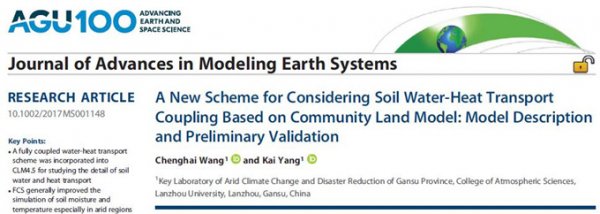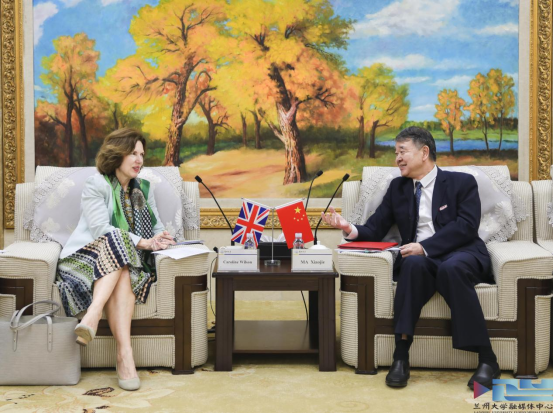In recent years, Prof. Wang Chenghai’s research group of LZU has been devoted to developing and establishing the component models of earth systems, and has born a series of fruits in land surface simulation and parametric improvement. His work addressed the issue of separate calculation of water and heat conduction in land model without coupling and realized full coupling in FCS (Fully Coupled water-heat transport Scheme). Preliminary assay shows that FCS increases soil temperature and humidity, which provides a more detailed description of soil moisture and heat transfer process, and it is conducive to deepening the understanding of the physical mechanism of land surface and heat transfer. Reviewers believe that this scheme is more complete theoretically and the corresponding numerical experiments show that the simulations of soil temperature and moisture are improved. This research result was published online on Journal of Advances in Modeling Earth Systems (IF=4.189).

The abstract of the paper is as follows:
Land surface models (LSMs) have developed significantly over the past few decades, with the result that most LSMs can generally reproduce the characteristics of the land surface. However, LSMs fail to reproduce some details of soil water and heat transport during seasonal transition periods because they neglect the effects of interactions between water movement and heat transfer in the soil. Such effects are critical for a complete understanding of water‐heat transport within a soil thermohydraulic regime. In this study, a fully coupled water‐heat transport scheme (FCS) is incorporated into the Community Land Model (version 4.5) to replaces its original isothermal scheme, which is more complete in theory. Observational data from five sites are used to validate the performance of the FCS. The simulation results at both single‐point and global scale show that the FCS improved the simulation of soil moisture and temperature. FCS better reproduced the characteristics of drier and colder surface layers in arid regions by considering the diffusion of soil water vapor, which is a nonnegligible process in soil, especially for soil surface layers, while its effects in cold regions are generally inverse. It also accounted for the sensible heat fluxes caused by liquid water flow, which can contribute to heat transfer in both surface and deep layers. The FCS affects the estimation of surface sensible heat (SH) and latent heat (LH) and provides the details of soil heat and water transportation, which benefits to understand the inner physical process of soil water‐heat migration.

(Translated by Li Xingyi; proofread by Zhang Yina; edited by Li Xingyi)




